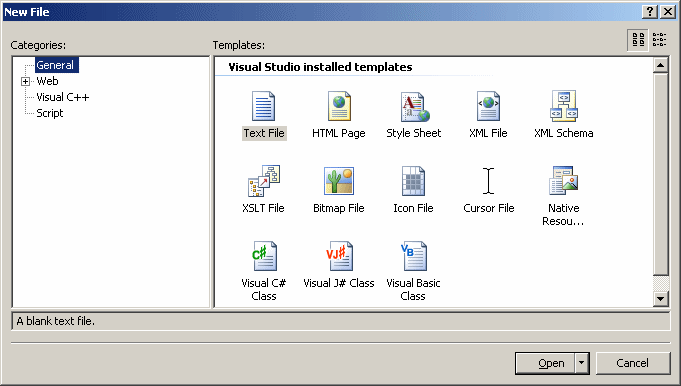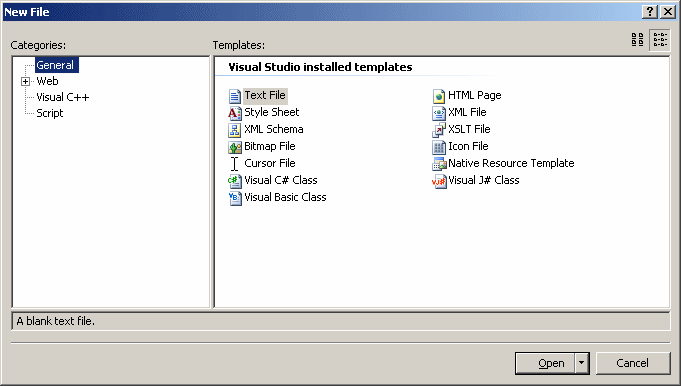
GDI+ Icons
 |
GDI+ Icons |
|

To create an icon, once again, you can use any application that has the capability. Normally, you can use Microsoft Visual Studio 2005 to create or design an icon. To do this
This would open the Add Resource dialog box. In the Add Resource dialog box, you can select Icon:
And click New. When you start designing an icon, you would be presented with a drawing area whose dimensions are 32 x 32 pixels. This is the size of the icon that displays as Large Icon. Here is an example from the New File dialog box of Microsoft Visual Studio 2005 in the Templates list:  In some cases, you may allow the user to display smaller icons, which are 16x16 pixels:  To make this possible, you can associate a second icon to the 32x32 one. The application you use to design your icon should make it simple for you to add this second icon. To do this in Microsoft Visual Studio 2005, while the icon is displaying:
When the New Icon Image Type dialog box comes up, you can click 16x16, 16 colors and click OK. Whether you create only one or both versions of the icon, both are stored in a single file whose extension is .ico
To support icons, the GDI+ library provides the Icon class, which is defined in the System::Drawing namespace. To use an icon in your application, you can first declare an Icon handle using one of the class' constructors. If the icon is stored in a file, the simplest constructor to use it has the following syntax: public:
Icon(String ^ filename);
With this constructor, the name of, or the path to, the icon file is passed as argument. After creating the icon, if you want to use only one size version, you can use one the following constructors to declare the variable: public:
Icon(Icon ^ original, Size size);
Icon(Icon ^ original, int width, int height);
After initializing an Icon variable, if you want to get its dimensions, you can access its Width and its Height properties, or its Size property. As mentioned already, there are various ways an icon can be used. For example, you can display it in a control by drawing it. To do this, you can call the Graphics::DrawIcon() method which is overloaded with two versions whose syntaxes are: public:
void DrawIcon(Icon ^ icon, Rectangle targetRect);
void DrawIcon(Icon ^ icon, int x, int y);
The first version allows you to specify the location and dimensions of the icon. The second version allows you to specify only the location of the icon.
|
|
|
||
| Home | Copyright © 2007-2013, FunctionX | |
|
|
||